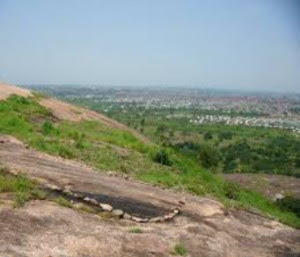ORANMIYAN STAFF OSUN STATE

Ile-Ife is an ancient town with many historic tourist attractions,ranging from the Palace of the Ooni in Enuwa, the Ife Museum and many others. One of the top attractions at Ile-Ife is the Oranmiyan Staff (Opa Oranmiyan). The staff is above 18 feet and has some intricate designs on it. It has myth, history and culture around it. It is a must-see for tourists. A visit to the ancient city of Ife would not be complete without seeing the staff. The Oranmiyan Staff can be seen at the Oranmiyan Shrine at the Arubidi quarter of Ile-Ife. Although certain traditional rites are performed there, it is still open to tourists. But there are some parts of the shrine that could only be accessed by the initiates. On entering the shrine, the staff could be seen just about 40 feet away. It has a square shaped elevated demarcation made with stones. From atop the demarcation, there are three steps to walk down and get to the staff. It is further demarcated by a metal chain. The base of staff is co...









